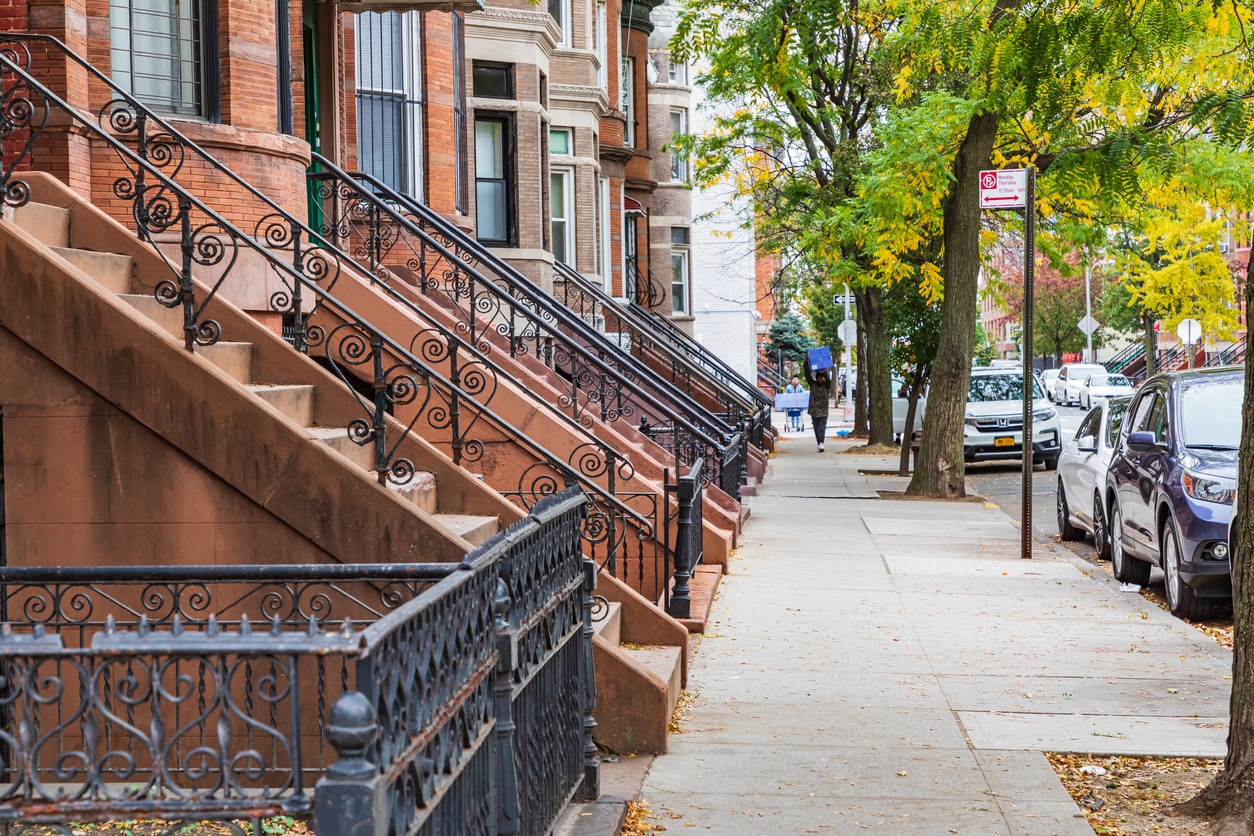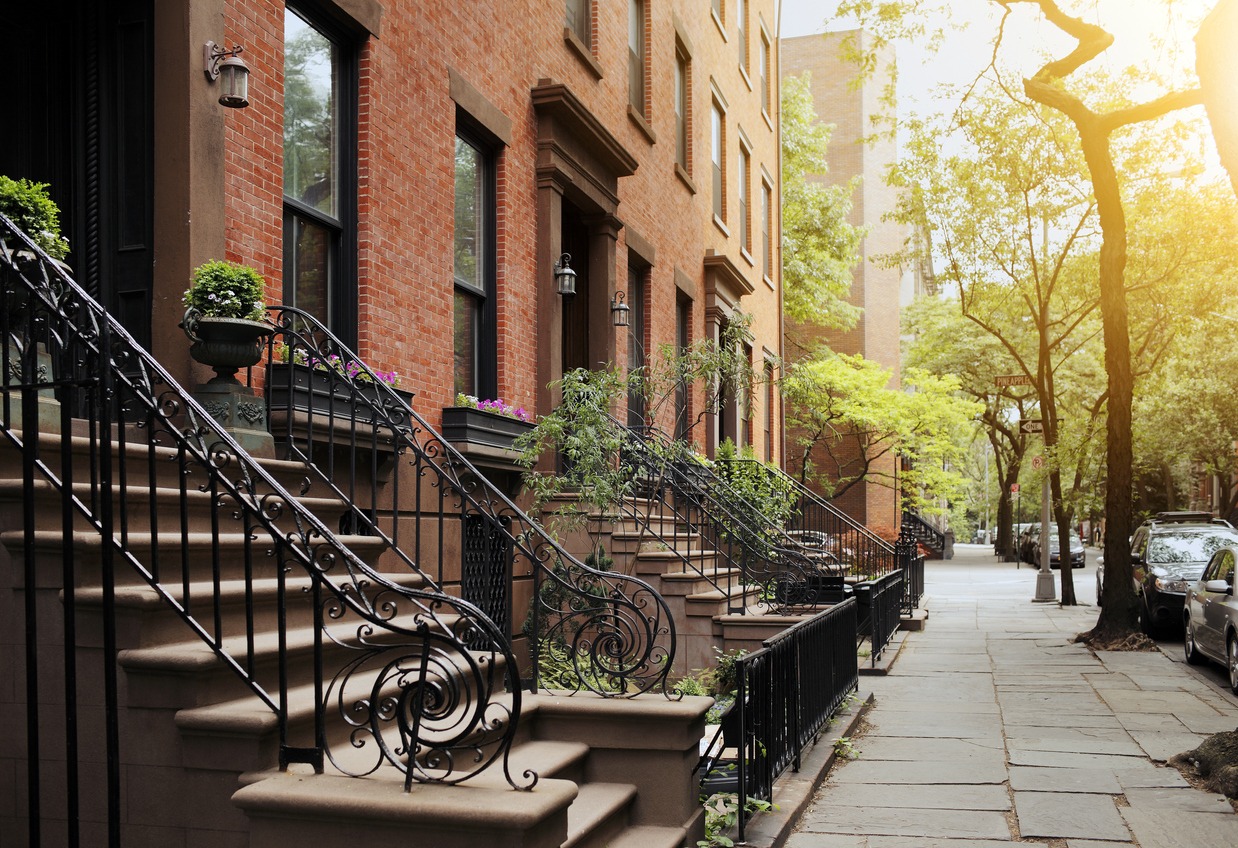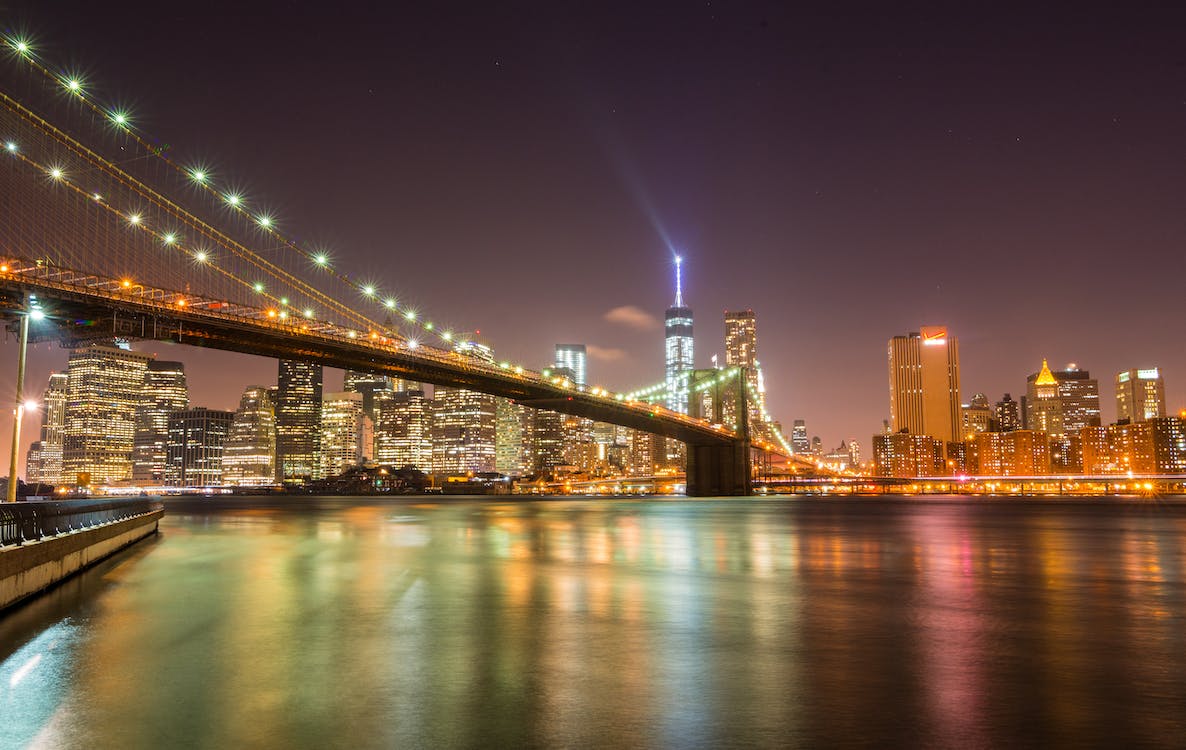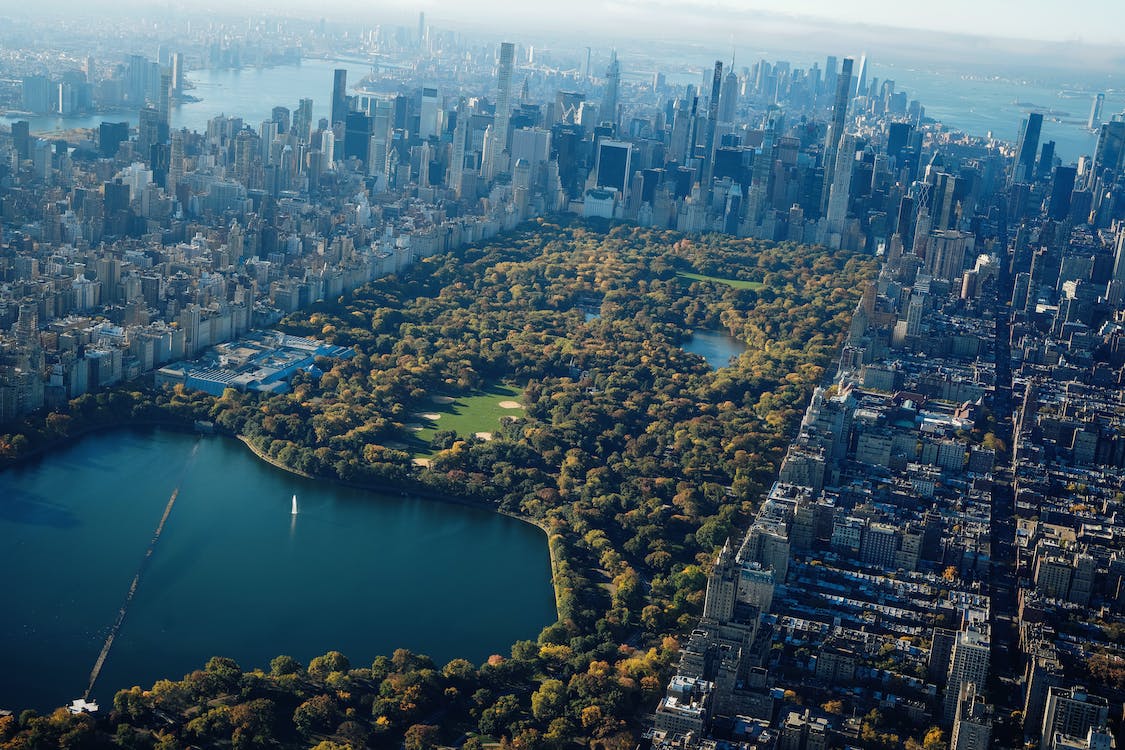The story of New York City (NYC) suburbs is a captivating saga of transformation, encapsulating the dreams and aspirations of countless individuals over the centuries. As one of the most iconic cities globally, NYC’s gravitational pull has extended far beyond its immediate borders, leading to the development and growth of suburban areas that each hold their unique place in the tapestry of American history.
A Journey Through New York City’s History
The story of New York City (NYC) suburbs is a captivating saga of transformation, encapsulating the dreams and aspirations of countless individuals over the centuries. As one of the most iconic cities globally, NYC’s gravitational pull has extended far beyond its immediate borders, leading to the development and growth of suburban areas that each hold their unique place in the tapestry of American history.
Early Beginnings
The history of NYC suburbs can be traced back to the early 19th century when the burgeoning city began to spill over its confines, driven by industrial growth and a booming population. Places like Brooklyn and Queens, now integral parts of the city, started as independent towns, offering respite from the bustling city life. The development of infrastructure, particularly the introduction of ferries and later, the expansion of the railroad system, played a pivotal role in making the suburbs accessible and attractive to city dwellers seeking more space and a better quality of life.
The Golden Age of Suburbia
The post-World War II era marked the golden age of American suburbia, and the suburbs around NYC were no exception. This period saw an unprecedented expansion of suburban areas, fueled by the GI Bill, economic prosperity, and a burgeoning middle class. Levittown, on Long Island, became the epitome of this suburban dream, offering affordable housing to returning veterans and their families. These mass-produced homes, arranged in neat rows and surrounded by lawns, became the blueprint for suburban development across the country.
Evolution and Diversity
As the decades rolled on, the suburbs around NYC evolved, reflecting broader social, economic, and cultural shifts. The latter half of the 20th century saw increasing diversity in suburban demographics, with new immigrant communities adding their unique cultural imprints to these areas. Economic shifts also led to the growth of suburban office parks and the rise of the so-called “edge cities,” blurring the lines between urban and suburban living.
Challenges and Resilience
The growth of the suburbs has not been without its challenges. Issues such as urban sprawl, environmental sustainability, and socioeconomic disparities have sparked debates about the future of suburban living. Yet, the suburbs have shown remarkable resilience and adaptability. Initiatives aimed at revitalizing downtown areas, improving public transportation, and promoting sustainable development are helping to redefine suburban living for the 21st century.
Architectural Evolution and Housing Trends in NYC Suburbs
The architectural landscape of New York City’s suburbs has undergone a fascinating evolution, mirroring the broader changes in American society and responding to technological advancements, shifts in lifestyle, and evolving aesthetic preferences. This journey from the early imitations of urban architectural styles to the development of distinct suburban identities offers a window into the American dream’s changing nature.
From Urban Mimicry to Suburban Originality
In the early stages of suburban development, the architecture of suburban homes often reflected the styles prevalent in urban centers, albeit with adaptations to accommodate the suburban setting. Victorian, Colonial, and Tudor styles were popular, featuring spacious interiors and expansive gardens, a luxury unaffordable in the city’s cramped quarters. These homes offered a slice of the urban architectural elegance, reimagined for the tranquility of the suburbs.
Impact of Technological and Lifestyle Changes
The 20th century brought significant changes that would reshape the suburban architectural landscape. The rise of the automobile liberated homeowners from the need to live near railway lines or streetcar routes, broadening the scope for suburban expansion and influencing home design. Driveways and garages became standard features, reflecting the car’s central role in suburban life.
Advancements in construction technology, such as the development of lightweight, affordable building materials and prefabrication techniques, made it possible to construct homes more quickly and economically. This democratization of home-building allowed a broader segment of the population to aspire to homeownership, fueling the suburban boom.
Emergence of Iconic Suburban Styles
As suburbs grew, distinct architectural styles emerged, tailored to the needs and desires of suburban families. The Cape Cod style, with its simple, symmetrical design and gabled roof, evoked the charm of New England’s coastal homes, offering a sense of tradition and stability. The Ranch style, characterized by its single-story layout, open floor plan, and integration with the surrounding landscape, catered to the desire for simplicity and indoor-outdoor living.
The Split-Level home, with its staggered floor plan, offered a solution to the varying needs of family life, providing separate spaces for living, sleeping, and recreation within a compact footprint. These styles, among others, became synonymous with suburban living, each reflecting a facet of the suburban ideal.
Planned Communities and the Ideal of Suburban Living
The concept of planned communities represented a significant evolution in suburban development. These communities were meticulously designed to provide not just housing but a complete living environment, including schools, parks, shopping centers, and recreational facilities. Levittown, New York, is perhaps the most famous example, often cited as the archetype of the post-war suburban development.
These planned communities were marketed as idyllic settings for family life, offering safety, community, and convenience. They were often designed with a keen eye for aesthetics and functionality, featuring winding streets, cul-de-sacs, and communal green spaces, fostering a sense of community and belonging. Discover more of NYC’s Historic roots. Learn about the beginnings of Punk Rock. Visit Echoes of Rebellion – Tracing Punk Rock’s Roots in the Lower East Side of New York City
Transportation and Connectivity – Shaping the NYC Suburban Landscape
The story of suburban development around New York City is inextricably linked to the evolution of transportation and connectivity. As each new mode of transportation emerged and infrastructure expanded, it reshaped the suburban landscape, influencing where people lived, worked, and how they interacted with the urban core of NYC.
Railroads and Streetcars: The First Wave of Suburban Expansion
The late 19th and early 20th centuries marked the beginning of the suburban boom, largely fueled by the expansion of railroads and streetcar lines. These modes of transportation were the lifelines of early suburbs, making it possible for residents to live outside the city’s confines while maintaining access to its jobs and amenities. Suburbs that sprang up along these rail lines, often referred to as “railroad suburbs,” were among the first to develop and flourished as attractive places for middle and upper-middle-class families.
The development of commuter rail services, like those provided by the Long Island Rail Road and the Metro-North Railroad, transformed the surrounding areas. Towns that were once rural or semi-rural became bustling suburban communities, with train stations often serving as the nucleus around which commercial and residential areas developed.
Bridges and Tunnels
The construction of major bridges and tunnels in the early 20th century played a pivotal role in integrating suburban areas with New York City. Landmark structures like the George Washington Bridge (opened in 1931) and the Holland Tunnel (opened in 1927) were engineering marvels of their time and symbolized a new era of connectivity. These infrastructures facilitated the movement of not just people but also goods, linking the city’s economic activities with the surrounding regions and contributing to the area’s overall growth and prosperity.
The impact of these bridges and tunnels went beyond mere physical connectivity; they also influenced real estate development patterns, with areas close to these entry points into the city becoming highly sought after due to their enhanced accessibility.
The Automobile and the Interstate Highway System
The post-World War II era brought about a transformative change in the suburban landscape with the rise of car culture and the construction of the Interstate Highway System. The widespread adoption of the automobile and the development of extensive highway networks made it easier than ever to travel greater distances quickly and comfortably. This shift led to the development of suburbs further from the city, as people were no longer bound by the locations of rail lines and stations.
The Interstate Highway System, in particular, had a profound impact on suburban expansion. Highways such as the I-95, which runs along the East Coast, including through parts of New York and New Jersey, made previously remote areas accessible, leading to the development of new suburbs and the growth of existing ones. This era saw the birth of the “exurb,” communities located beyond the traditional suburbs, often characterized by more space, larger homes, and a more rural setting.
Social and Cultural Dynamics in NYC Suburbs
The social and cultural fabric of the suburbs surrounding New York City has undergone profound transformations, reflecting broader societal shifts and becoming a microcosm of America’s evolving identity. From the post-war critiques of suburban life to the vibrant, diverse communities of today, the suburbs have both shaped and been shaped by the social and cultural dynamics of their times.
Mid-20th Century: Suburbia Under Scrutiny
In the post-World War II era, the American suburbs, including those around NYC, emerged as symbols of the country’s prosperity and the realization of the American dream. However, this period also saw the rise of critical voices that portrayed the suburbs as enclaves of conformity and materialism. Novels like Richard Yates’s “Revolutionary Road” and the cultural critiques from the Beat Generation painted a picture of suburban life that was suffocating under the weight of its own quest for perfection and uniformity. These critiques often highlighted the mundane repetition of suburban routines and the suppression of individuality, suggesting a darker undercurrent beneath the manicured lawns and cookie-cutter homes.
Social Movements and Suburban Activism
Despite these critiques, the suburbs around NYC were far from static or monolithic. They became fertile grounds for social change, particularly during the civil rights movement and the feminist movement. Suburban communities saw the formation of grassroots organizations that fought for racial equality, integration, and women’s rights. These movements challenged the status quo and pushed for a reexamination of the suburban ideal, advocating for inclusivity, equality, and social justice. The activism and community organizing in these areas underscored the potential for suburban communities to be agents of change rather than mere bastions of conformity.
The Changing Face of the Suburbs
As the 20th century progressed, the demographic and cultural landscape of NYC’s suburbs began to shift. Immigration patterns changed, and suburban areas became increasingly diverse, reflecting global movements and the changing face of America. This diversity brought with it a rich tapestry of cultural influences, transforming the suburban landscape in profound ways.
Suburbs that were once predominantly homogenous began to celebrate a variety of festivals, cuisines, and traditions, turning these communities into vibrant cultural melting pots. Ethnic enclaves flourished, each contributing their unique cultural heritage to the suburban mosaic. This transformation was not without its challenges, as communities grappled with issues of integration, identity, and the redefinition of community values. However, the overall trend has been towards a more inclusive and diverse suburban culture, one that mirrors the complex, interconnected world of the 21st century.
Contemporary Suburban Culture
Today, the suburbs around New York City are characterized by their cultural richness and diversity. Annual festivals celebrate this diversity, from traditional American holidays to cultural events that honor the traditions of the community’s newest members. Culinary landscapes have expanded, with suburban dining options now encompassing a world of cuisines. This cultural shift has also influenced the arts, education, and community life, with suburban areas supporting a range of cultural institutions, art galleries, and educational initiatives that reflect their diverse populations.
Environmental Considerations and Sustainable Development
As awareness of environmental issues has grown, the sustainability of suburban development has come under scrutiny. The traditional suburban model, with its reliance on automobiles and its large ecological footprint, has faced criticism. In response, there has been a push towards more sustainable suburban development practices, including the promotion of public transportation, the development of green spaces, and the construction of energy-efficient homes.
Moreover, some suburbs around NYC are experimenting with “smart growth” principles, which aim to create more walkable, community-oriented spaces that reduce reliance on cars and preserve open spaces. These efforts reflect a growing recognition of the need to balance suburban living’s convenience and appeal with the need to protect and sustain the environment.
New York City Suburbs
New York City’s suburban landscape is vast and varied, encompassing a wide range of communities with their own unique characteristics and charm. Here’s a list of some notable NYC suburbs, each with a short overview:
Westchester County, NY
- White Plains: The commercial hub of Westchester, offering a blend of urban amenities and suburban comfort. Known for its shopping districts, parks, and diverse housing options.
- Scarsdale: Renowned for its affluent residential character, top-rated schools, and well-maintained parks, Scarsdale epitomizes upscale suburban living.
Nassau County, NY (Long Island)
- Garden City: A planned community known for its beautiful tree-lined streets, historic homes, and a strong sense of community. Its proximity to NYC makes it a favored choice for commuters.
- Great Neck: Situated on the North Shore of Long Island, Great Neck is known for its waterfront parks, excellent schools, and vibrant Jewish community.
Suffolk County, NY (Long Island)
- Huntington: Offers a mix of charming villages, bustling downtown areas, and beaches. It’s known for its cultural centers, including the Paramount Theater.
- Smithtown: Characterized by its spacious homes, large lots, and natural beauty, including parks and beaches. It’s a quieter, more residential area.
Rockland County, NY
- Nyack: A vibrant riverside town known for its artistic community, eclectic shops, and Victorian homes. It offers a small-town feel with easy access to NYC.
- Clarkstown: Includes hamlets like New City and is known for its family-friendly atmosphere, parks, and recreational facilities.
Bergen County, NJ
- Ridgewood: Offers a picturesque downtown area, high-ranking schools, and a variety of cultural and community events. Its train service to NYC appeals to commuters.
- Paramus: Known as a shopping mecca with several large malls, yet it maintains a suburban residential character with parks and schools.
Essex County, NJ
- Montclair: Known for its vibrant arts scene, diverse population, and historic architecture. Montclair offers a rich cultural life with museums, theaters, and galleries.
- Maplewood: A family-friendly suburb with a diverse and inclusive community. It’s known for its charming downtown, arts events, and parks.
Union County, NJ
- Westfield: Features a bustling downtown with shopping and dining, combined with quiet residential neighborhoods. It’s known for its community events and schools.
- Summit: Offers a blend of suburban tranquility and urban convenience, with a lively downtown, direct train service to NYC, and well-regarded public schools.
Fairfield County, CT
- Stamford: A city within a suburban context, Stamford offers a bustling downtown, corporate centers, and diverse living options, from urban condos to suburban neighborhoods.
- Greenwich: Known for its affluence, waterfront beauty, and excellent schools, Greenwich offers a high quality of life with easy access to NYC.
These suburbs, each with their unique appeal, contribute to the rich tapestry of the New York City metropolitan area, offering a range of lifestyles, from the urban-adjacent to the more traditionally suburban and even rural settings.
Conclusion
The history of NYC suburbs is a rich and multifaceted narrative, woven into the broader story of American progress and change. From their early beginnings as quiet retreats from city life to their current status as vibrant, diverse communities, the suburbs have played a crucial role in shaping the character and destiny of the New York metropolitan area. As we look to the future, the suburbs around NYC continue to evolve, reflecting the dreams and challenges of a new generation.




